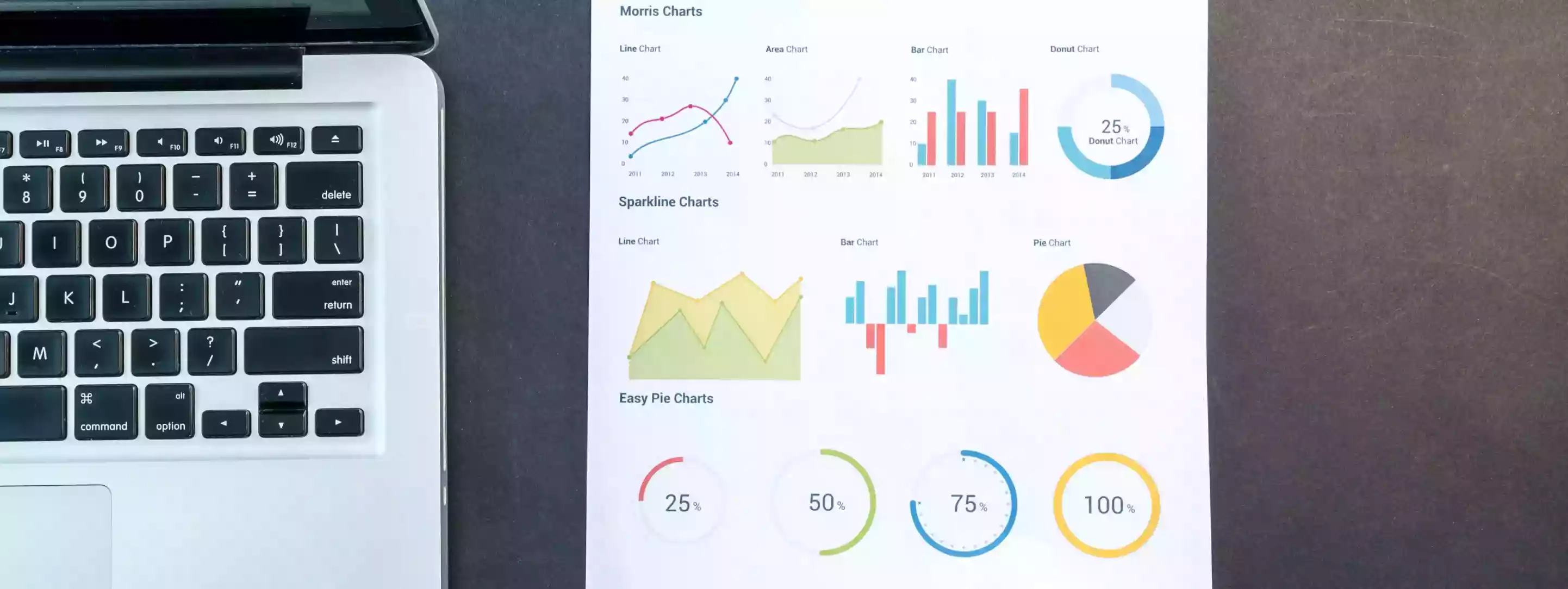A successful business owner makes good plans for the future outcomes of his company. Predictive data analytics helps you use different statistical techniques to plan a future for your company with a good idea of the future of your industry. In this blog post, I am going to walk you through the following topics:
- What is predictive data analytics?
- Why do you need predictive data analytics?
- Different types of predictive data analytics.
- Benefits of predictive analytics to businesses.
- How Bold BI assists in predictive data analytics and organizational growth.
What is predictive data analytics?
Predictive data analytics comprises different techniques such as data mining, predictive modeling, and machine learning that help in analyzing current and historical facts to predict future outcomes. Predictive analytics allows you to forecast the path to your goals and both see and rectify obstacles.
Why do you need predictive data analytics?
Business operators need predictive analytics in their day-to-day application for the following reasons:
- To identify untapped opportunities.
- To minimize risk.
- To improve product quality.
- To monitor employee’s performance.
To identify untapped opportunities
Discovering untapped opportunities helps businesses improve the sale of their products and services. By analyzing company data, you can improve the future performance of your business by identifying growth opportunities in your business and finding proper solutions to emerging challenges. Predictive analytics helps you identify untapped markets and potential customers who may be interested in your products and services, thus making you more aware of customer needs so you can make your products available to those markets in the future.
To minimize risk
Analyzing the industry and economic data periodically, you can predict customer buying patterns, supply and demand for products and services both offered and required by a company. With these predictions, companies can prepare in terms of production, stock management, workforce procurements, and more. Also, predictive analytics will help companies determine if there will be enough of a market for a new product or service in the future to be worth investing in now. Furthermore, based on market analysis, production managers can predict whether the price of required raw materials will be increasing too much, and get a head start on finding alternative, cheaper materials to help the company cater to market demand.
To improve product quality and sales
Analyzing the past and current data of customer behavior and purchase trends for products and services offered by a company allows business managers to understand which products may sell most and least in the future. This gives them more accurate future sales expectations for their departments. Using the valuable information gained from the analysis, they will be able to work on poorly performing products by applying proper solutions to problems. Whether that’s increasing product quality, targeting ad campaigns to the appropriate markets, or scrapping the product to focus on more lucrative offerings, the company will be able to plan ahead to meet sales targets. Keeping an eye on industry sales and innovation trends will also keep a company ahead of the curve on customer demand for certain components in products. Adjustments can be made early to offerings to keep up with popular trends, and in some fields, improving science.
To improve employee performance
Predictive analytics helps company leaders gain insight into their employees’ performance by monitoring their past and present achievements. By projecting their continued performance and looking at common patterns of performance in their employees’ careers, they will be able to identify consistently improving employees and poorly performing employees. This enables managers to set appropriate goals that keep ambitious employees challenged but not stressed. Managers can spot struggling employees before they become discouraged and provide assistance. By collecting data on the outcomes of these interventions, managers can plan training around what worked best. Over time, analytics can predict at what point in a new employee’s career a certain kind of training would have the most impact. Predictive analytics can also determine ideal workloads for your workforce and forecast the growth of your company, helping HR departments determine when to hire more support before current employees become overwhelmed.
Different types of predictive data analytics
There are five types of predictive data analytics companies can use to improve their business plans:
Forecast model
The forecast model is a popular type of predictive data analytics that forecasts answers to questions that have to do with numbers, like money or traffic numbers, based on input historical data. More complex models can take current events into account and predict their impact on those numbers. So, companies can predict future outcomes in their business in sales, revenue, and website management, for example, with this model. It helps operators efficiently manage their cashflow and allocate resources for future growth.
Classification model
The classification model is a type of predictive data analytics where new data is classified based on the classification of historical data. The model can be easily retrained with future data. The classification model’s analyses are best for answering yes-or-no questions. It is often used in financial departments to track fraudulent transactions by examining abnormalities within data sets.
Outlier model
The outlier model identifies unusual data in a data set, either in isolation or in relation to different categories and numbers, which could indicate issues that require attention. For example, it helps engineers detect bad data from their statistics results, which allows them to solve problems and train their model to produce accurate data in future.
Time series model
The time series model help leaders to focus on data where time is the input parameter. It uses years of past numerical data to predict future numbers, taking into account temporal factors such as seasons and holidays, which impact businesses like retail, and current events.
Clustering model
Clustering data is where big data is divided into different groups based on common characteristics. Frequently used to cluster different kinds of customers, it predicts their interests and likelihood of purchasing different kinds of products and services. This informs targeted marketing campaigns, but also lets marketers and designers experiment with features, pricing, and strategies and that make their offering more appealing to a broader base.
Benefits of predictive data analytics to businesses
I am going to show you some of how companies can benefit from predictive models in the following subtopics:
- Better decision-making.
- Improved customer satisfaction.
- Improved campaign performance.
- Saves time and money.
- Improved HR processes.
Better decision-making

By using statistical techniques such as machine learning to predict future outcomes in a business, leaders find it easier to understand how to change their business operational models to optimize success. Predictive analytics forecasts risk by analyzing current and past data, giving executives a more informed idea of where markets are going and what position their company will be in to meet future trends. They can make better decisions for allocating resources that enable them to move forward. By predicting the future of their business and industry, leadership can better assess whether and where expansion now is most likely to result in profit or benefit in the near future.
Improved customer satisfaction

Predictive analytics helps you use software and modeling techniques to improve your customer satisfaction. By analyzing past data such as weekly visitors and customer acquisition costs, managers can use data mining to gain insight into their customers’ preferences and behavior. This can lead to better design of a company’s website or a store’s floor plan, improving ease of use. Analyzing industry trends can give a company a heads up on products or features that are gaining in popularity, giving their designers and production managers time to get ahead of the game integrating those trends. For example, a small rise in internet content on and searches for a particular ingredient in the health industry may be overlooked, but a projection of that rise could help a cosmetics company determine if it’s the next big trend for their products. They can satisfy customer demand before their competitors.
Improved campaign performance

Companies will find that the proper application of predictive analytics can improve the success of their marketing campaigns. Feeding the BI program data such as from past campaigns, current and target customer data, industry demand, and website traffic data will let it predict the success of different strategies on your current and target customer base. Your marketing department can choose a strategy with more confidence and adjust it to the current promotion.
Saves time and money

Data analytics dashboards help business leaders quickly see their top-selling and least-selling products in simple visualizations. They can see the sales trends for their products, but also for their competitor’s products, letting the determine whether the issue for poor-selling products is industry-wide. The future of all similar products can be projected with predictive analytics. This information enables them decide whether to invest in improving and promoting these products or concentrate resources on products that are projected to continue doing well. They can also use analytics to predict whether the demand for a new product is likely to be sustained enough to spend resources on in the first place. A company’s time and money will be better spent with more accurate predictions at their fingertips.
Improved HR processes
Predictive analytics helps leaders predict the turnover rate of employees for the coming year. Just analyzing data from the previous few years can let HR departments spot and ameliorate problems causing exceptionally high turnover. Predictive analytics, though, can keep your company running smoothly by informing HR departments of how many recruits they will need to find at what rate, depending both on the turnover rate and the rate of growth of the company. Leaving positions open too long can put an unnecessary burden on the rest of a department’s workforce, so getting a head start on the recruitment process can increase employee retention.
How Bold BI assists in predictive data analytics and organizational growth
Bold BI® is a powerful tool for creating and sharing interactive analytical dashboards in your organization. With Bold BI, you can display results from predictive models produced using other machine learning environments. Additionally, you can use built-in methods available for forecasting to help stakeholders identify business risks and understand trends in their industry.
With Bold BI’s user-friendly, fully customizable dashboards, you can track key performance indicators that your team depends on for its success such as:
- Sales forecasts.
- Projected revenue.
- Projected expenses.
- Churn rate.
- Conversion rate.
To learn more about Bold BI and how it helps business operators predict future outcomes in their business, refer to this Predictive Analytics.
Try out all the features of Bold BI with 30-day free trial.Start Embedding Powerful Analytics
Why don’t you give it a try now?
I hope you now have a better understanding of predictive analytics and how it helps you gain knowledge about future results in your business.
Get started with Bold BI® by signing up for a free trial and create more interactive business intelligence dashboards. You can contact us by submitting questions through the Bold BI website or, if you already have an account, you can log in to submit your support question.



















